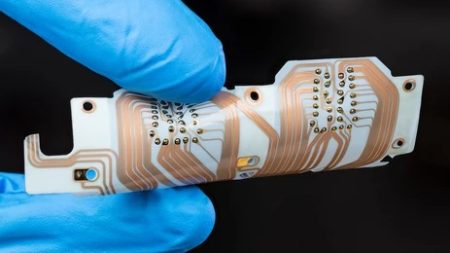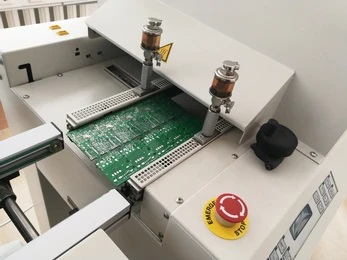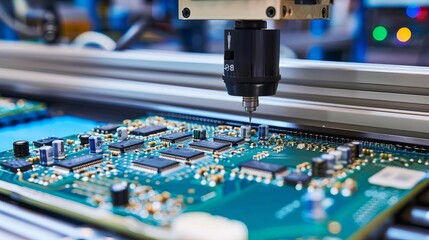- +86-755-23012705
- Building 3, Jinfeng Industrial Park, Fuyong Street, Baoan District, Shenzhen ,China
- [email protected]
Printed Circuit Board Assembly (PCBA) is a crucial component in the world of modern electronics. As consumer electronics continue to evolve, the role of PCBA in making these devices functional, efficient, and reliable has become more pronounced. From smartphones and laptops to wearable devices and home appliances, PCBA is integral to virtually every electronic gadget. In this blog, we will explore how PCBA contributes to the development and performance of consumer electronics, its manufacturing process, and the challenges and trends driving innovation in the field.
PCBA stands for Printed Circuit Board Assembly, a process that involves the assembly of electronic components onto a printed circuit board (PCB). The PCB serves as the foundation for connecting and supporting the components through a system of conductive pathways, or traces. These components can include resistors, capacitors, chips, and connectors, which are all placed and soldered onto the PCB to form a functional electronic circuit. Once the components are attached, the PCBA is tested for quality and functionality before being integrated into larger systems like smartphones, televisions, and medical devices.
PCBA is the backbone of nearly every consumer electronic product. It is the means by which electrical components communicate and work together to perform a specific function. The following are some of the ways PCBA is used in consumer electronics:

Smartphones are one of the most complex consumer electronics today, integrating multiple functionalities such as communication, photography, computing, and navigation in a compact device. The heart of these devices is their PCBA, which interconnects the processor, memory, display, battery, and various sensors. For example, in a modern smartphone, the main PCB will house the central processing unit (CPU), system memory (RAM), storage, power management circuits, and wireless communication modules like Wi-Fi and Bluetooth. The quality of the PCBA directly impacts the performance, speed, and durability of the device.
Laptops and desktop computers are another area where PCBA plays a vital role. The motherboards of these devices are essentially large PCBAs that connect the CPU, RAM, hard drives, graphic cards, and other components to create a fully functional computer system. As technology advances, these PCBAs are designed to be smaller, more efficient, and capable of handling higher speeds and more powerful components.
Wearable technology like smartwatches, fitness trackers, and health-monitoring devices rely heavily on efficient PCBA design. These devices must be small and lightweight, but also capable of integrating sensors, batteries, wireless communication, and pocessing power. The development of flexible PCBAs has made it possible to design more compact and ergonomically comfortable wearables without sacrificing performance.
Consumer electronics are not just limited to gadgets like phones and computers but also extend to household appliances such as refrigerators, washing machines, microwave ovens, and air conditioners. In these devices, PCBA is used for everything from controlling user interfaces to managing power distribution and sensor data. For instance, a smart refrigerator with temperature control, touchscreens, and Wi-Fi connectivity relies on multiple PCBAs working together to ensure all features function seamlessly.
In televisions, sound systems, and smart speakers, PCBAs are used to manage signal processing, connectivity, and power distribution. With the rise of smart TVs and voice assistants like Alexa and Google Home, PCBAs have become even more essential for integrating wireless communication, image processing, and voice recognition.
The process of creating a PCBA is highly detailed and requires precision to ensure the final product meets quality standards. Here is a basic overview of the steps involved:
Before assembly begins, engineers design the PCB layout, which dictates the placement of components, traces, and connections. Software like CAD (Computer-Aided Design) tools are used to create blueprints for the board. After design approval, a prototype is created to test the functionality and verify that all components work as intended.
Solder paste is applied to the PCB, which is then used to affix components. The paste is typically applied through a stencil, ensuring that the paste is only placed in areas where components need to be soldered.
Automated machines place the electronic components onto the board. This step requires high precision, as components can range in size from a few millimeters to sub-millimeter sizes, especially for advanced components like microchips and resistors.
Once the components are in place, the PCB goes through a reflow oven, where the solder paste is heated to melt and bond the components to the board. This step is critical for ensuring reliable electrical connections.
After the assembly is complete, the board undergoes a series of inspections to check for defects or issues in the solder joints, component placement, or circuit paths. Automated optical inspection (AOI) and X-ray inspection are commonly used. Functional testing follows, where the assembled PCBA is checked for proper operation.

As consumer electronics continue to evolve, so do the challenges and trends in PCBA manufacturing:
Devices are becoming smaller and more compact, placing a demand on PCBAs to shrink in size while maintaining functionality. Smaller PCBs often require tighter tolerances, smaller components, and improved design strategies.
The rise of wearable and foldable electronics has led to an increased demand for flexible PCBAs. These boards can bend or fold without losing their functionality, allowing for innovative designs that were previously impossible.
With the advancement of 5G technology, artificial intelligence, and augmented reality, PCBs need to support higher speeds and greater component densities. Designing PCBs with minimal signal interference and efficient power management is increasingly challenging.
As environmental concerns grow, the electronics industry is also focusing on making PCBAs more sustainable. This includes using lead-free solder, reducing energy consumption during manufacturing, and improving the recyclability of PCBs.
PCBA is the heart and soul of modern consumer electronics. As technology continues to push the boundaries of innovation, the demand for more compact, efficient, and reliable PCBAs will only grow. From smartphones and laptops to wearables and home appliances, PCBA enables the performance and functionality we have come to expect from our electronic devices. Understanding the role of PCBA helps us appreciate the complexity behind the everyday devices we use, and underscores the ongoing advancements in electronics manufacturing.

Make Your PCB Dreams a Reality with XPCB Limited
XPCB Limited is your go-to partner for turning your PCB dreams into reality. Our streamlined PCB manufacturing process, combined with quick-turnaround prototyping and turnkey PCBA services, ensures that your projects come to life with ease. Trust in our expertise and dedication to quality as we help you achieve your PCB goals. Join us and experience the difference with XPCB Limited.






XPCB Limited is a premium PCB & PCBA manufacturer based in China.
We specialize in multilayer flexible circuits, rigid-flex PCB, HDI PCB, and Rogers PCB.
Quick-turn PCB prototyping is our specialty. Demanding project is our advantage.
Tel : +86-136-3163-3671
Fax : +86-755-2301 2705
Email : [email protected]
© 2024 - XPCB Limited All Right Reserve
